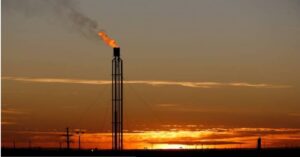The government should continue with the extant formula for the pricing of natural gas as per November 2014 guidelines

The pricing of domestic gas presents a mix of administrative control and market forces.
A major reason why fertiliser subsidy zoomed to Rs 2.25 lakh crore in the revised estimate (RE) of 2022-23 against the budget estimate (BE) of Rs 1.05 lakh crore was the sharp increase in the price of natural gas, which accounts for over 80 percent of the production cost of urea. Almost all manufacturing of urea in India is based on natural gas.
India consumes 59.5 billion cubic metres (bcm) of natural gas annually. Of this, nearly 54 percent, or 32.13 bcm, is produced domestically, and the balance is met from imports of liquefied natural gas (LNG). Of the domestic gas, around two-thirds, or 21.5 bcm, comes from legacy fields allotted under the New Exploration and Licensing Policy (NELP) launched in 1999 and blocks given on nomination to state-owned ONGC and Oil India Limited (OIL). The remaining one-third of domestic supplies comes from deep/ultra-deep and high-pressure/high-temperature fields, mostly located in the Krishna-Godavari or KG basin off the coast of Andhra Pradesh.
Pricing Formula
Under the pricing guidelines effective since November 2014, the rate paid for supplies from the legacy fields is a weighted average of prices at four international locations: Henry Hub (the USA), Alberta Gas (Canada), National Balancing Point (the UK), and Russian Gas. The price is revised every six months in a financial year and it was last revised to $8.57 per million British thermal units (mmBtu) on October 1, 2022, which is almost three times the level of October 1, 2021.
Supplies from KG basin fields, under a special dispensation given in March 2016, receive a premium price. This rate is based on a process of competitive bidding, subject to a ceiling linked to the prices of alternate fuels including fuel oil, naphtha, and LNG. The bid price (albeit a ceiling) since October 2022 is $12.6 per mmBtu, more than twice the level a year ago.
Concerned about the impact of high gas prices on fertiliser subsidy bill and steep hike in prices of CNG and PNG, the government constituted a committee led by Kirit Parikh in September 2022 to review the current pricing formula for domestic natural gas and restructure it in order to ensure ‘a fair price to the end consumer’.
Parikh Committee Recommendations
On supplies from legacy fields, the committee recommended linking the price of natural gas to that of imported crude oil with a floor and ceiling. The floor price will be $4 per mmBtu, and the ceiling price $6.5 per mmBtu, with an annual increase of US$0.5 per mmBtu. The committee also recommended that the price be market-determined from January 1, 2027. Even at 10 percent of the current crude price of the Indian basket ($83 per barrel), the price of gas will be $8.3 per mmBtu. This is not very different from the existing formula-based price of $8.57 per mmBtu. Yet, in a bid to provide relief to users, the committee has proposed a cap of $6.5 per mmBtu.
Strangely, it has also recommended a premium of 20 percent over the administered price for the so-called ‘new gas’ that ONGC/OIL produces from old or legacy fields. A 20 percent premium on $6.5 per mmBtu translates to $7.8 per mmBtu. If most of the gas supplied by ONGC/OIL is treated as ‘new gas’, users will end up paying $7.8 per mmBtu. This would be a case of ‘giving with one hand and taking away with the other’. An annual increase of $0.5 per mmBtu will take the price to $9.8 per mmBtu at the end of four years when the market-determined price will take effect.
For the deep/ultra-deep and high-pressure/high-temperature fields, the committee wants the ceiling to be continued for three years till January 1, 2026. But this is no consolation as the current cap is high at $12.6 per mmBtu, and it will increase further in sync with the prices of fuels used to determine this cap.
No Relief For Users
In short, there is nothing in the Committee’s recommendations that would give relief to natural gas users from high prices. They won’t get relief even under a market-based regime 3-4 years from now, as the domestic supply situation is unlikely to improve drastically given the current pace of exploration and production.
The government should continue with the extant formula for the pricing of natural gas as per November 2014 guidelines. The supplies from deep/ultra-deep and high-pressure/high-temperature fields should also be governed by this formula. This is logical. Although producing gas from these fields involves higher investment, they also deliver more volumes and therefore generate higher revenue even with the same price.
To deal with the current unprecedented situation triggered by the Ukraine war, it may put a cap of say $6 per mmBtu on natural gas prices. When the situation normalises leading to a reduction in price (albeit formula based), this cap will automatically become redundant.
UTTAM GUPTA is a policy analyst. Views are personal and do not represent the stand of this publication.
https://www.moneycontrol.com/news/opinion/cap-natural-gas-prices-to-control-rising-fertiliser-subsidy-10070341.html